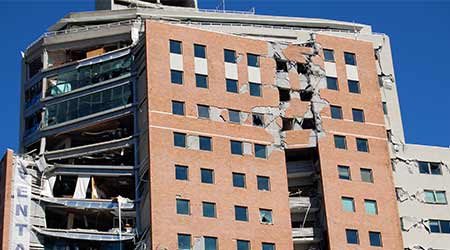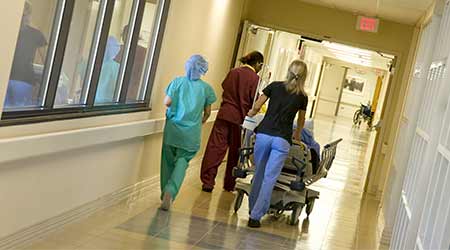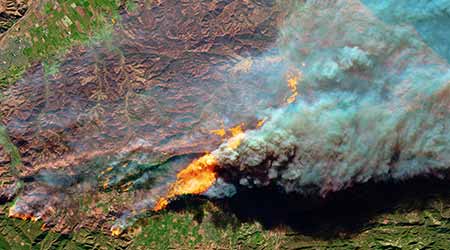
Earthquake Sensor Helps See If Building Is Safe
July 26, 2019
Resilience against natural disasters involves not only surviving the event but returning to normal operations as soon as possible to mitigate negative business impacts. One hazard that presents particular challenges for resuming operations is earthquakes, as the standard structural evaluation process is slow and manual. However, a new sensor being developed could help clear facilities for occupancy much sooner after an earthquake event.
Utilizing laser beams and position sensitive detectors, researchers at Lawrence Berkeley National Laboratory, in conjunction with Lawrence Livermore National Laboratory, and the University of Nevada-Reno, have developed a sensor that can rapidly measure interstory drift in multi-story buildings. The Discrete Diode Position Sensor (DDPS) has performed well in several shake table tests and will be installed for field trials in a multi-story building at Berkeley Lab, which sits adjacent to the Hayward Fault.
Measuring interstory drift is not the novel component of the sensor. Earthquake accelerometers installed at various points in a building have been traditionally used to measure how much a building has moved during an earthquake event. What the new sensor offers is a faster and more reliable way of accessing and processing the building movement data, with tools that would be less costly than accelerometers, according to Berkeley Lab.
Potentially easier deployment and wider adoption of interstory drift measurement technology would facilitate faster access to information that would allow municipalities to better understand if critical infrastructure, such as hospitals, is safe to use immediately after an earthquake, say researchers. Wide-adoption of the technology would also help to more quickly evaluate the safety of buildings in densely populated areas, as compared to processing a municipal portfolio through manual inspection. In addition, the researchers say sensor data could be used to help pinpoint where damage is likeliest in a structure, also speeding up the inspection and recovery process.
Naomi Millán is senior editor of Building Operating Management.
Next
Read next on FacilitiesNet











.jpg)
